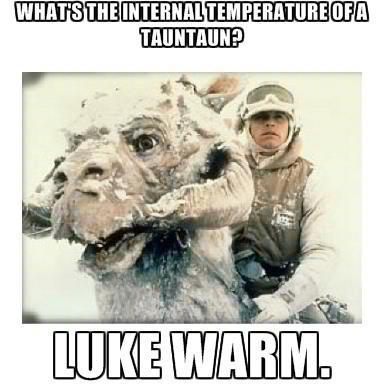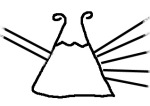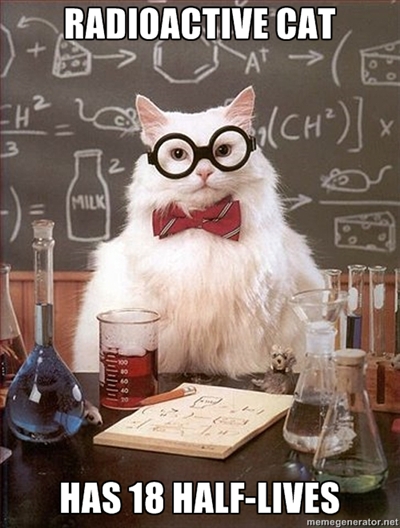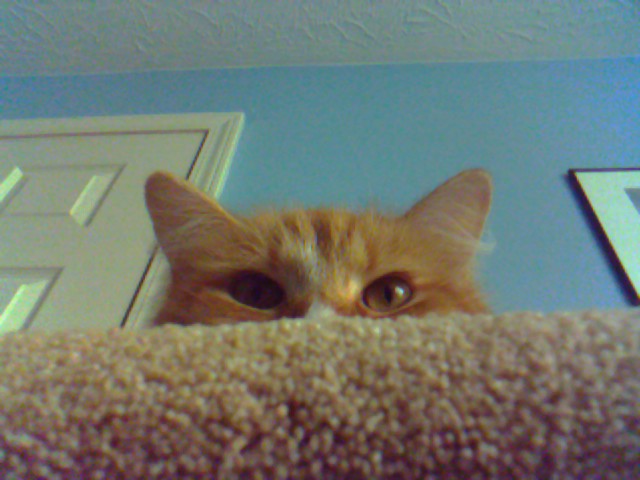
Right. I’ll get to the science stuff in a minute. There’s a meteorite that hit the ground near here. I want to check it out. It won’t take long.

If you are teaching an astronomy class, I have a challenge for you. Introduce your students to minority astronomers. Neil deGrasse Tyson isn’t the only black astronomer! When I teach introductory biology I make sure to teach about women that are scientists and at the end of the semester, I often give a bonus point on the final if students can name a single female scientist that isn’t Marie Curie. Some can, some can’t.

Via Boing Boing, a heartwarming discussion of how your bellybutton is a special place for bacteria. OK, so it isn’t heartwarming, but what class from high school biology on up doesn’t involve sampling skin bacteria and growing them on petri dishes. It becomes slightly more intensive when you get into actually identifying all the bacteria present, but this is probably something that upper level courses might consider, if they have the required technology and resources.

Speaking of bacteria, and why not, since we are just walking, talking bacteria hosts and vectors, is this neat little bit on how certain bacteria have distinct smells. A well stocked lab with good safety controls could easily show off some of these lovely little bugs and remind students to use all their senses when making observations.
This piece actually reminds me of something I came across years ago about the naming of several short chain fatty acids (which happened to tie into my dissertation, another story for another day) and guess what, thank the interwebs, it still exists! If you are teaching a primary, secondary or introductory chemistry course, this would be a neat little thing to toss into a lab. It would only take a few minutes, perhaps while something else is going on, but having some samplers of things like butyric acid and a bit of rancid butter to compare it with would be a neat sensory lab. I’m not sure how you get a goat to compare caproic (hexanoic) acid with, but maybe some goat hair would do?

Worrying response to fatal shark attacks off the coast of Australia. While five fatal attacks in ten months sounds like it should be a definite concern, is it a trend marking a change in behavior? I’m not so sure.
If you look at the number of fatal attacks for all of Australia for the last decade, there is no clear trend that can be discerned. It is highly disturbing that there are now calls for a hunt for the shark responsible for the most recent attack. Attempting to hunt down the one large great white shark in an ocean that attacked a person is simply not a feasible idea. Great white sharks can roam dozens of miles in a day and can migrate thousands of miles seasonally. Without clear identification of the shark, checking stomach contents of a killed shark would be the only way to determine if you had caught and killed the right shark.
Revenge hunts won’t convince other sharks not to attack. People watching for sharks in the vicinity of beaches is a good preventative, but is not any more functional with a long coastline.

Tara C. Smith describes using zombies to teach about diseases, pandemics and other public health issues. How cool is that? What an excellent opportunity for discussion and fostering an active learning environment!

More joy from the Philipines, sea turtles saved from poacher’s nets. This probably should be viewed in the context of a larger dispute over territorial waters claimed by both China (where the poachers were from) and the Philipines, as noted in the link.

Lemurs are facing some serious threats and may be at risk of extinction.

Apparently moon dust is bad for you. Well, I could have told you that! Sharp pieces of regolith could get in your eyes and scratch your cornea or irritate your airways, not unlike inhaling ground glass. Here is the paper for specifics.

E. coli strain 0157 is a very nasty bug, and since there is no good reason to assume that the Germantown, Ohio outbreak came from meat (a recent outbreak was linked to feral hogs foraging in fields being used to produce vegetables), it will be interesting to see if a source is found. I’ll be keeping my eyes on the MMWR. In fact, students in any microbiology, disease ecology or public health course dealing with epidemiology should be asked to read and present reports from the MMWR as part of their course in order to see how the things they are studying are reflected in the real world.

There is a belief that lies can be detected via body language hint of looking up to the left. Apparently (surprise), it isn’t true, or at least is unreliable. Just like so many other lie detection tools.

The placebo effect is a very important concept to understand when examining any claim that a drug, intervention, device, whatever, has a positive effect. Well designed clinical trials can help researchers separate false effects from real ones (which is why alternative medicine seems powerful in small trials with poor statistical power, but when examined in large randomized double blind trials, the effect is no different from placebo. Hope plus effective treatment is very powerful. Hope plus nothing may make a person feel good in the short term, but in the long run can lead to dangerous delays in treatment.
People are less familiar with the nocebo effect, wherein something has a negative effect, even if there is nothing there.
In one study, 44 percent of lactose-intolerant people reported gastrointestinal problems after taking a fake lactose tablet. (Impressively, a quarter of people without lactose intolerance also reported digestive troubles after taking the tablet.) And in a somewhat cruel prostate drug study, one group of subjects was told that sexual dysfunction was a possible side effect, while the other group wasn’t. The better-informed group reported sexual side effects at a rate of 44 percent, compared to only 15 percent in the blissfully ignorant group.
People can actually make themselves more likely to experience side effects by simply knowing about them. Medical and nursing students would be well served by reading and discussing how this affects their interactions with patients and communicating risks of treatments. There is a fine line between communicating and providing informed consent and negatively influencing a patient’s treatment.
Undergraduate students in psychology or communication courses would also benefit from class discussions about interactions and how they affect both patient expectations and patient compliance (the linchpin of slowing the development and spread of antibiotic resistance).

It can be difficult to express the sheer diversity of ferns, but this SA blog post does that in spades. Don’t just show your students a fern from the florist. Show them the wild variety of these ancient plants and toss in some examples of ferns from the fossil record. If you can afford it, add some to your personal or department fossil collection.

Mixing live virus vaccines that can mix genes is causing problems in chicken farms. Could this happen in humans? Except for the oral polio vaccine, no, because our live virus vaccines that are given simultaneously can’t mix genes. The oral polio vaccine can recombine, but this is uncommon, and the oral vaccine is only used where polio is still a common disease. Is this virus a risk to people? No, people can’t catch this particular virus. If this sounds like the flu strains swapping genes, it should.

I love cats and cats go so well with science. Cats aren’t just something that students are familiar with, but they have some great features that make them good teaching tools. For example, calico and tortoiseshell cats are almost always female because the mix of alleles that cause a tricolor cat can only occur in a cat with two X chromosomes. A male cat that is calico is going to be the feline equivalent of Klinefelter’s syndrome. If it is as common in cats as it is in people, an assumption for which I have absolutely no evidence, then only 1 in 500 to 1 in 1000 male cats would be feline Klinefelter’s, even before the color pattern is determined.
So why are calico cats important? Find me an introductory biology text that doesn’t have a picture of a tricolor cat in the section about X chromosome interaction. They give us a visible examples of the mosaics formed during development as one X chromosome or another is inactivated, and only the color gene on the active chromosome is expressed. The presence of two active X chromosomes in a cell is probably toxic on some level to the animal. This likely has to do with the effect that the dosage of genes on a single chromosome being just right, while two is too much. More on cats in the classroom and the effects of aneuploidy on cells in the future, just not simultaneously.

Gorgeous video of a variety of insects getting a tasty, nutrient rich snack of pollen. Don’t worry, the flower will probably benefit by having a little bit (just enough) pollen finding its way to a stigma and then on to an ovary. (via @BugGirl on the twitter machines)
And here is another video of a critically endangered Lord Howe Island stick insect emerging from its egg. Wow. How nice it must be to not have a hard exoskeleton immediately upon hatching! More info here.
Lord Howe Island Stick Insect hatching from Zoos Victoria on Vimeo.

Keep an eye out for baby spiders doing their best impersonation of beloved literary characters!

Auroras are pretty neat. Maybe I’ll get a chance to see one some time. I just hope it doesn’t come with a solar flare powerful enough to be visible in Central Kentucky. Phil Plait not only has coverage of the most recent flare, but like he suggests, check out his related links for far more information than I could possibly impart. Just don’t forget to enjoy this video of the aurora from the BBC.

Enjoy this 360 panorama view of the inside of the Large Hadron Collider.

Updates:
There are now suspects in the vandalism of a fossil bed in Alberta. I hope they get put away for geologic time.
Edinburgh’s Legionaires’ outbreak is continuing, with the total reported cases topping 100.
Ever wonder how creationists respond to major news items regarding evolution, say, regarding fossil dinosaurs with type 1 feathers? Check it out at Playing Chess with Pigeons.

And if you are on Twitter, Follow me!
Further, if you are on twitter, follow Joanne Manaster @sciencegoddess for some great science information and teaching goodies like this!








